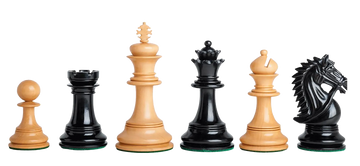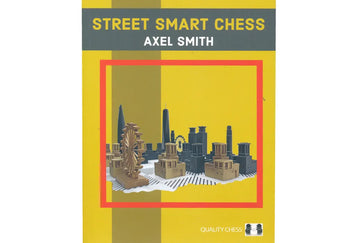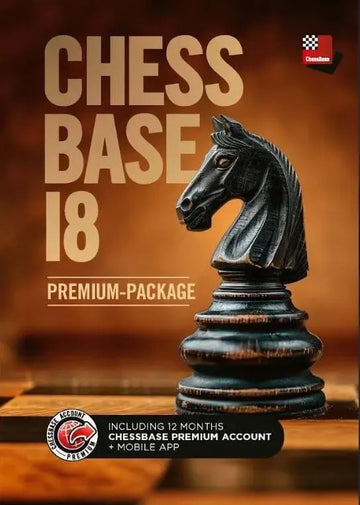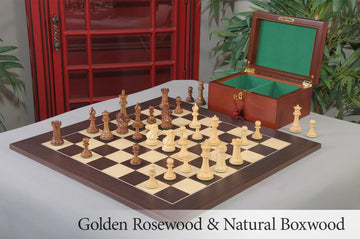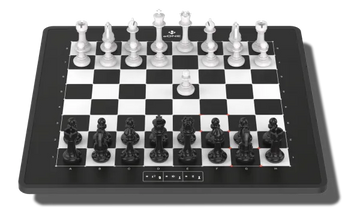Upgrade Your Game With the Woodpecker Method
Chess tactics are a hard nut to crack, and few training systems have reverberated through the chess world in recent years quite like the Woodpecker Method!
By repeating the same tactical chess puzzles at ever faster rates, the method aims to hardwire the unconscious mind to recognize critical patterns and make better tactical decisions during real chess games. Some Grandmasters even claim it has helped to increase their overall performance and rating more than any other!
In this guide, you’ll learn exactly what the Woodpecker Method is, how to use it, and whether or not it could make the perfect training program for you.

What is the Woodpecker Method?
The Woodpecker Method is a chess tactics training system compiled by Swedish Grandmasters Axel Smith and Hans Tikkanen. Both players claim to have achieved grandmaster status largely from practicing the method and went on to publish the internationally-acclaimed book ‘The Woodpecker Method’ in 2018.

The Woodpecker Method book is a course of specially-selected chess puzzles from real games of chess world champions to train chess tactical ability. Several hundred puzzles are completed over a one month period. Then the same puzzles are completed again in half the time. Then in half the time again, and so on, until all the puzzles can be completed in just one day!
The program takes around two months to complete and demands significant time and commitment from participants. Many players claim that it has significantly sharpened their tactical vision, decreased the frequency of misses and blunders, and ultimately increased their Elo rating by several hundred points.
Others are less convinced - it's possible that brain rewiring doesn't happen in the same way for everyone! Beginners, in particular, often report that the puzzles are too difficult. Ultimately, the Woodpecker Method is probably intended more for serious intermediate to advanced players rather than beginners and casual players.
The Story Behind the Woodpecker Method
The Woodpecker Method was brought to the world stage by Swedish friends Hans Tikkanen and Axel Smith. Before discovering the method, both were talented chess players, but neither of them were Grandmasters.
Hans Tikkanen
In 2010, Hans Tikkanen, (then an International Master) came up with a unique personal training system.

Ever determined to improve his game, Tikkanen decided to spend one month solving 1100 tactical puzzles taken from games of the chess world champions. Upon completing the first month, he went on to complete the same puzzles again, this time shortening the time limit to two weeks. Once completed, he solved the same puzzles again in one week, then in a few days, then all 1100 in one day!
Tikkanen concluded he was able to complete puzzles faster not simply by conscious memorization, but by tactical pattern recognition that became more and more ingrained in the unconscious mind. Spotting the solutions simply became more fluent and natural as time went on.
Seven weeks after completing the program, Hans Tikkanen received three GM norms (exceptional results that earn Grandmaster status). Since becoming a Grandmaster, Tikkanen has won the Swedish chess championships five times.
Of course, other players demanded to know the secret to his success. Hans Tikkanen tentatively began sharing his formula, and though he never came up with a name for his method, his protégé soon would...
Axel Smith
In his early twenties, Axel Smith was an ordinary 2000+ Elo chess player - talented, yet a long way behind the world's chess elite. Ever-devoted to achieving Grandmaster status, Axel Smith looked up to his friend Hans Tikkanen for inspiration on improving his game.
After learning of Tikkanen’s remarkable success with his training system, he dedicated himself to it for several years. First mentioned in his book ‘Pump Up Your Rating’ (2013), Axel coined the term ‘Woodpecker Method’ after Hans Tikkanen whose name roughly translates as ‘Little Woodpecker’. It also fitted perfectly with the repetitive, tenacious nature of the training!

Finally achieving Grandmaster norms in 2016, Smith claims he owes a great deal of his remarkable rise in chess to the method. In 2018, Axel and Hans co-authored the book ‘The Woodpecker Method’. Having received rave reviews around the world, the book went on to become an International Best Seller.
Other books by Axel Smith include Black & White Magic, and Street Smart Chess.
The Woodpecker Method Schedule
The woodpecker method is a systematic program that takes chess students through two months of tough tactical training. The program is scheduled as follows:
- First Cycle: Solve between 200-1000+ chess puzzles in one month (the exact number isn’t critical).
- Take a break for a few days
- Second Cycle: Solve exactly the same chess puzzles in two weeks.
- Take a break for a couple of days.
- Third Cycle: Solve the same chess puzzles in one week.
- Take a break for a day.
- Fourth Cycle: Solve the same chess puzzles in a few days.
- Take a break for a day.
- Fifth and Final Cycle: Solve the same chess puzzles in one day!
If you’re thinking the schedule sounds demanding, you’d be right! Many students of the Woodpecker Method attest that the course requires a great deal of time and commitment to complete successfully.
Creating Your Own Woodpecker Method Program
You don’t necessarily need to use the Woodpecker Method Book to benefit from the training system – you could make your own custom ‘woodpecker’ style course with chess puzzles from other books or websites. This might be wise if you're a beginner, since the puzzles in the book are not the easiest!
Many students, however, have reported that the specially-selected puzzles in the book are extremely helpful in improving tactical recognition and application. Since they're taken from the games of world champions, they're intended to get you thinking like the world's best players!
Different Levels of Puzzle
The Woodpecker Method book is divided into 1100 puzzles of varying levels:
- 222 Easy Puzzles
- 762 Intermediate Puzzles
- 144 Advanced Puzzles
The authors laid the book out in this way partly to make it accessible for players of varying levels. Yet Smith also advises advanced players not to skip over the easy puzzles! By training the recognition of simple tactical solutions, advanced players can make real-game decisions far more intuitively and naturally, without needing to make calculations in every situation.
Also, the various tiers offer students a way to solve more and more difficult puzzles as their ability improves. While novice players may be well-advised to just stick to the 222 Easy Puzzles in their first round of training, they may wish to incorporate intermediate puzzles as they progress.
Some reviewers have warned that even the ‘easy’ puzzles aren’t so simple to solve! The advanced puzzles, in particular, are designed exclusively for seasoned chess players and may even challenge chess masters in finding the right solutions.
Examples: Easy, Intermediate, Advanced
Note that in the following puzzles, there is no specified problem to solve - you must simply use a tactic to find the best way to win an advantage.
While this makes the puzzle more difficult to solve, the authors were determined that the puzzles should reflect real-life games. In a real chess game, there isn't anyone telling you 'checkmate in two moves' or 'win a rook in four moves' - so there aren't such prompts in the puzzles either!
Easy Puzzle
This puzzle comes from a common continuation of the King's Gambit Accepted: 1. e4 e5 2. f4 exf4 3. Nf3 g5 4. h4 f6

Hints
This puzzle helps the student recognize the dangers of advancing the f-pawn before the king is castled, and how to capitalize on it if your opponent plays it without caution! If White can get its queen to h5, it spells disaster for Black. Can you see how?
Solution
First, White clears the way for its queen with a bold knight sacrifice: 5. Nxg5. Now if Black captures: 5...fxg5, White can win a rook: 6. Qh5+ Ke7 7. Qxg5+ Ke8 8.Qh5+ Ke7 9. Qe5+ Kf7 10. Qxh8
Intermediate Puzzle
From the game between Carl Hamppe and Wilhelm Steinitz, Vienna 1859:

Hints
Notice how if Black’s bishop moves, the rook will pin White’s dark-squared bishop!
Solution
1...Bxd4+! 2.Kh1 Rxg3. White avoids checkmate (2.cxd4 Qxh2#) , but loses a piece. Black soon goes on to win the game.
Advanced Puzzle
This one is from a game between Wilhelm Steinitz and Curt Von Bardeleben in 1895. It’s a good example of how solutions for the advanced Woodpecker Method puzzles can go several moves deep!

Hint
You’re unlikely to get the full solution unless you’re a master - so don't beat yourself up!
Notice how the position is very sharp. Black queen is without a defender. Perhaps White can muster a discovered attack?
Solution
It all starts with 1. Qg4 g6 2. Ng5+. White launches a discovered attack on Black’s queen. If Black’s e-rook advances, Black threatens a back rank mate with ...Rxc1. Play continues with 2...Ke8 3.Rxe7+ Kf8 4.Rf7+ Kg8 5.Rg7+ Kh8 6.Rxh7+
At this point, Von Bardeleben left the board and never returned! Even Grandmasters lose their cool sometimes!
Is the Woodpecker Method the Fastest Way to Improve Your Elo Rating?
There is no doubt that the Woodpecker Method has helped many players to increase their Elo substantially. But is it the most effective training strategy for all chess players?
Naturally, sharpening chess tactical skills will help chess players at any level. But it’s probably a good idea to have a thorough understanding of tactics before you try this course. If tactics like creating outposts, mating nets, and ‘removing the defender’ aren’t entirely familiar to you, you’d be better off getting a good beginner’s chess book that gives you a solid grasp of these tactical motifs first.
Furthermore, for more novice players, spending time cultivating fundamental endgame tactics and middle game plans is probably going to skyrocket overall performance and rating much faster than tactical puzzles in the short term.
The Verdict. Is the Woodpecker Method Worth It?
After reading all about the Woodpecker Method, your burning question is likely to be: Is it worth it?
Certainly, the Woodpecker Method requires substantial time and energy to pursue. Although the rewards can be great, you also need to make sure you’re willing to put the work in to get the results that you're looking for.
It should also be reiterated that the Woodpecker Method isn’t for newcomers to chess. Even the ‘easy’ puzzles aren’t a walk in the park, so we wouldn’t recommend attempting the course if your rating is anywhere below 1000 Elo.
Ultimately, Woodpecker Method would have never attracted such a cult following it weren’t effective. It’s a super-charged tactical training course for intermediate and advanced players to boost their rating in the fastest way possible. If you’re willing to put the work in, the Woodpecker could well see your Elo soar to new heights!

